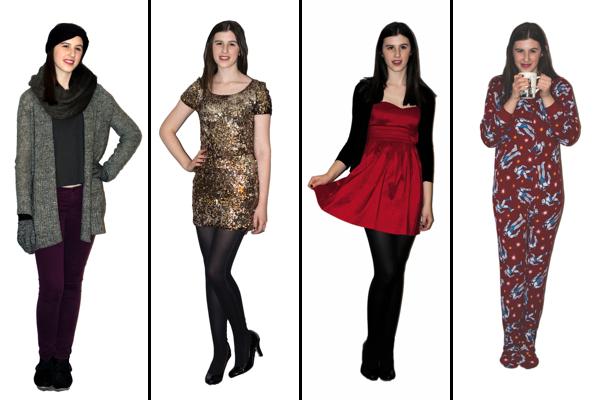Whether it is singing carols, hanging stockings or meeting someone under the mistletoe, everyone has their favorite holiday traditions. But sometimes we need a new twist in our festivities. This year you may want to borrow some ideas from around the world to spice up this special time of year.
If you like the idea of caroling, but are tired of “Jingle Bells” and “Let it Snow,” you may like to try out a “posada.” In Mexico and Central America, friends and family gather to go from house to house (or simply window to window around the perimeter of a house) while singing. Edwin Argueta, a McCormick freshman from Honduras, explained that the tradition “re-enacts Mary and Joseph’s trip to find a place for Jesus to be born.” Once the song narrating the journey ends, the people playing Joseph and Mary are invited inside to join the celebration. Argueta says this may include listening to a priest or talking about the Bible but always “dancing a little bit and eating.” You may not be religious or even Christian, but you may want to try your hand at adding some of this Latin flare to your Winter Break, even if it just means asking family to serenade you before you allow them inside.
As for eating, it may be that you’d like something other than turkey or ham this year. If so, consider eating carp instead. According to Communication sophomore Adam Pecena, this is the tradition in the Czech Republic, where some eat the fish store-bought, while others “keep the carp in their bathtub and kill it themselves.” However, children are not supposed to eat anything all day until the big dinner, probably so they “don’t fill themselves up with the traditional pastries and sweets.” You may not be keen on fasting all day for some fresh fish, but the fortunetelling traditions of the Czech Christmas might interest you. Cut an apple horizontally in half, and “if the hole left by the seeds looks like a star, then you’ll be in good health and luck for the next year,” Pecena said.
Another way to quite literally brighten up your holidays is by embracing some traditions from Colombia and Ecuador. In Colombia, Dec. 7 marks “Dia de las Velitas.” McCormick freshman Esteban Mercado, who is from Colombia, said on this day, “everyone lights candles outside with friends and family,” cities hold light shows and “there are fireworks everywhere” all through December.
On New Year’s Day, Ecuador lights up as well.
“People make ‘old years’ in the shapes of characters out of paper mache, stuff them with fireworks and then light them up,” said Mercado, who lived in Ecuador for five years. Fire and lights aside, you can also get a taste of South American traditions by enjoying the typical bunuelos, fried dough balls, with natilla, a sweet milk and rice spread.
However, the traditions don’t stop there for South America. In Brazil, it all comes down to the beach. On Dec. 31, people come together for what Carol Schivartche, a Communication freshman from Brazil, calls “the best part of the year.” For this New Year’s celebration known as Reveillon, “everyone dresses in white, a symbol of hope and peace for the new year. Girls wear yellow underwear. Everyone jumps seven waves holding hands and stuffs seven grapes into their mouths at once.” Unfortunately for us, New Year’s Day means winter, not summer, so getting in the water may not be ideal. Nonetheless, if you’re on a coast, it may be nice to celebrate like the Brazilians and say hello to the new year by looking out to the sunrise.
Whichever way you spend your holiday, whether you’re around a fireplace or lighting paper “old years,” do it with those you care about. One commonality unites the traditions — they are all celebrated with friends and family.
“It’s about being together as a family, being grateful for all those who are able to be there and also remember those who can’t,” Pecena said.
Email: [email protected]



